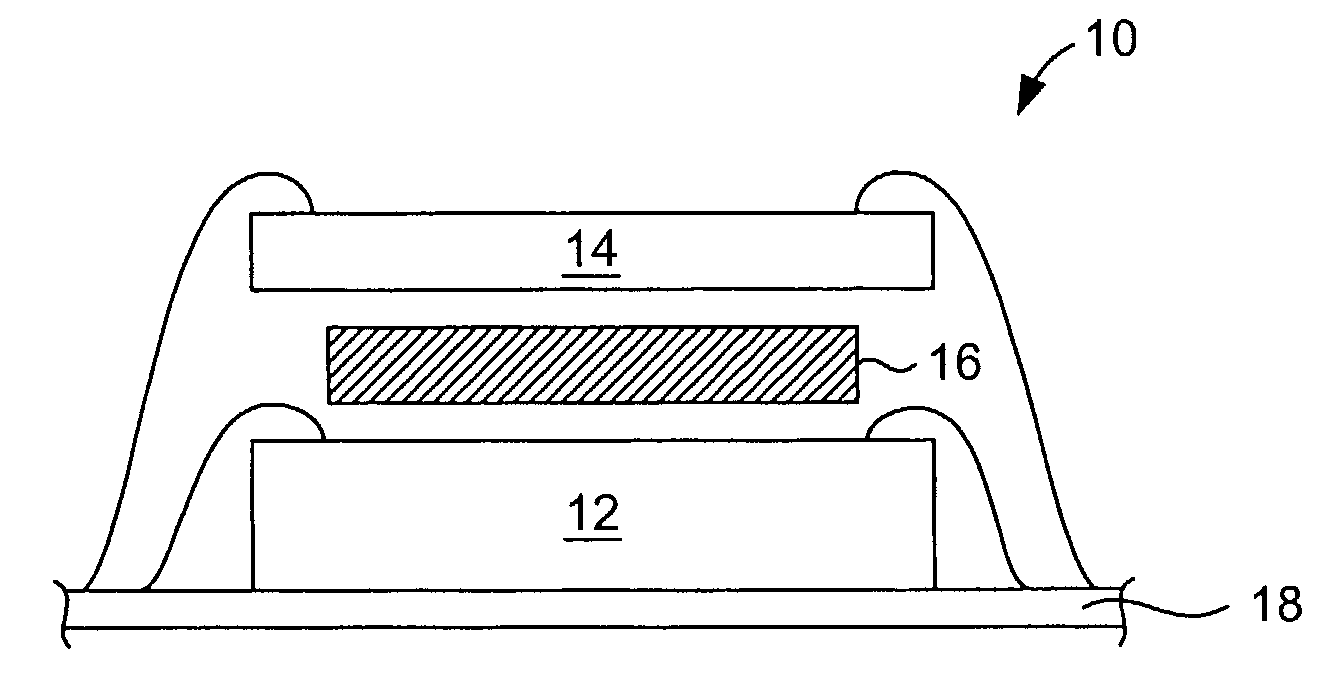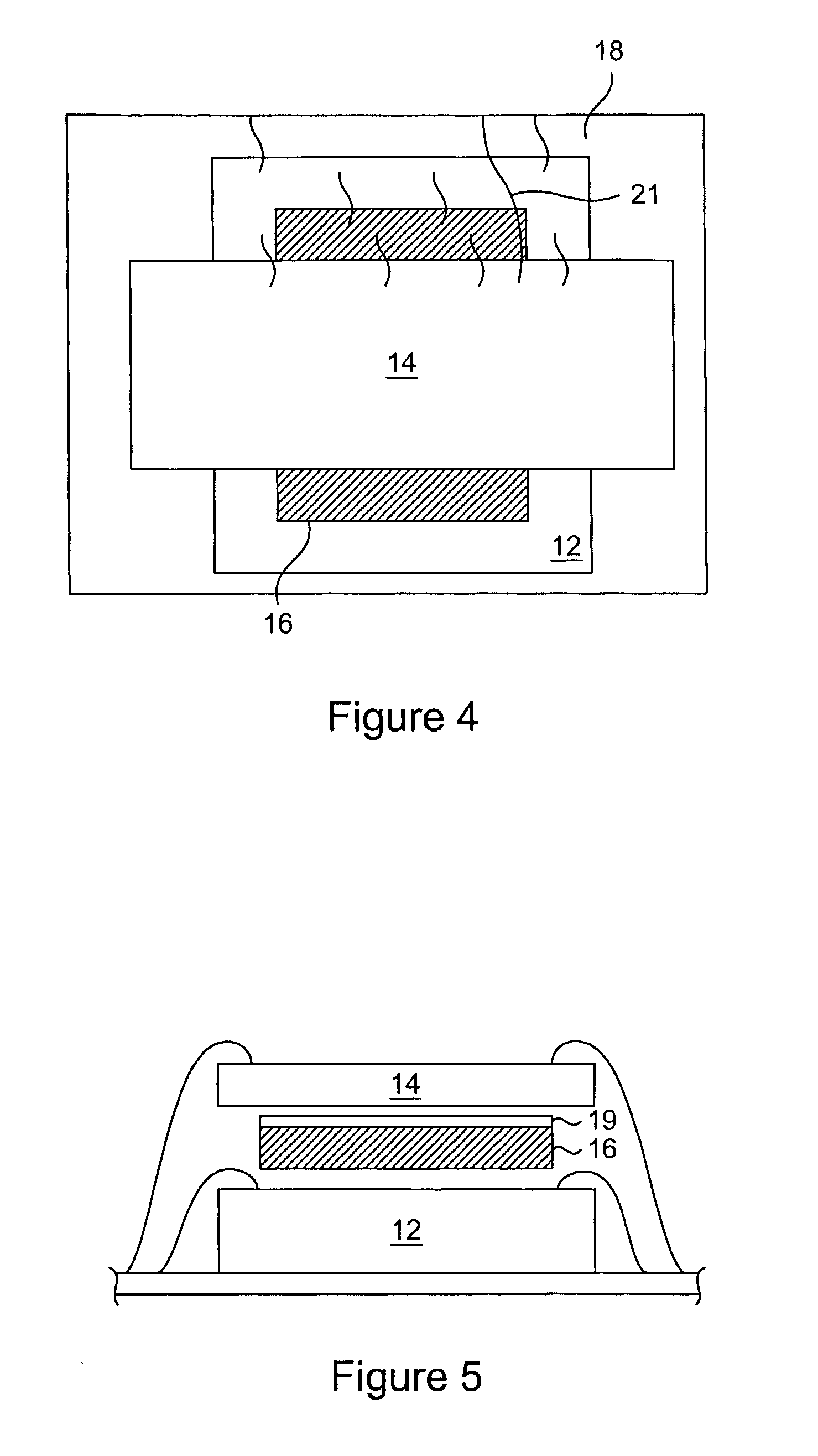Spacer with passive components for use in multi-chip modules
a technology of spacers and passive components, applied in the field of integrated circuits, can solve the problems of waste of module internal area, cost of forming a package around multiple dies, and insertion of spacers merely for insulation between active dies, so as to achieve more design freedom and efficient use of the total internal volume of the multi-chip module
- Summary
- Abstract
- Description
- Claims
- Application Information
AI Technical Summary
Benefits of technology
Problems solved by technology
Method used
Image
Examples
Embodiment Construction
[0016]In the following description, numerous specific details are set forth in order to provide a thorough understanding of the present invention. It will be understood to one skilled in the art that the present invention may be practiced without some or all of these specific details. In some instances, well known processes have not been described in detail in order not to unnecessarily obscure the present invention.
[0017]As shown in FIG. 1, multi-chip module 10 comprises two active dies, respectively 12 and 14, a spacer 16 with embedded passive components coupled, in this first embodiment, to die 12 and metal lead frame 18, upon which stacked dies 12 and 14 and spacer 16 are mounted and to which they are coupled. In this first embodiment, dies 12 and 14 are approximately the same size, with die 12 providing radio-frequency (RF) functionality and die 14 providing baseband functionality.
[0018]The completed multi-chip module would include a molded or cast body, made from any number of...
PUM
 Login to View More
Login to View More Abstract
Description
Claims
Application Information
 Login to View More
Login to View More - R&D
- Intellectual Property
- Life Sciences
- Materials
- Tech Scout
- Unparalleled Data Quality
- Higher Quality Content
- 60% Fewer Hallucinations
Browse by: Latest US Patents, China's latest patents, Technical Efficacy Thesaurus, Application Domain, Technology Topic, Popular Technical Reports.
© 2025 PatSnap. All rights reserved.Legal|Privacy policy|Modern Slavery Act Transparency Statement|Sitemap|About US| Contact US: help@patsnap.com



